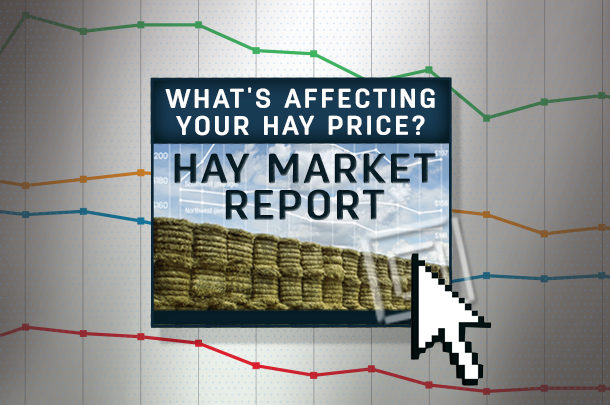Now we’ve added even more convenience for you to follow these reports. By signing up here for automatic email notifications, we’ll send you new reports as soon as they are posted. Although we’ll still send updated price reports through our Extra enewsletter, by signing up for automatic notification, you don’t have to wait on our enewsletter schedule to receive them.
An important part of each hay market report is editor Dave Natzke’s analysis of factors influencing price and demand. Several forces can impact hay market trends – hay quality, interest rates, feed commodity prices, oil prices, crop input costs, weather, transportation costs, milk prices, inflation, exports and international issues. The best way to understand market fluctuations is to study trends in relation to such events. There is value in keeping track of upswings and downturns over several months (or years) to help with buying and selling decisions. Thus, trends can be a critical barometer for producers, brokers, dairymen and livestock producers.
Hay markets vary widely by region and by product – such as alfalfa hay versus “other hay.” The prices in these reports reflect general price trends and movements by region. For purposes of our report, states providing data were divided into the following regions:
Southwest – Arizona, California, Nevada, New Mexico, Oklahoma, Texas
East – Kentucky, New York, Ohio, Pennsylvania
Northwest – Colorado, Idaho, Montana, Oregon, Utah, Washington, Wyoming
Midwest – Illinois, Iowa, Kansas, Michigan, Minnesota, Missouri, Nebraska, North Dakota, South Dakota, Wisconsin
The report information is provided by the National Agricultural Statistics Service (NASS) and is based on actual prices received. Hay quality, however, is not provided in the NASS reports.
Sign up today and receive your market reports directly to your email inbox as soon as they’re posted. ![]()

-
Lynn Jaynes
- Managing Editor
- Progressive Forage
- Email Lynn Jaynes
PHOTO: Staff photo.












